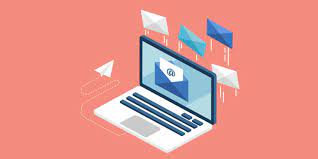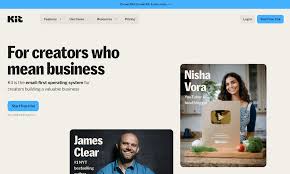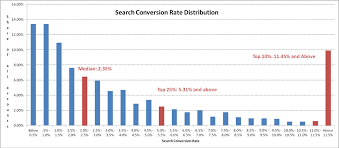Email outreach is a marketing strategy that involves reaching out to potential customers through email. It is an effective way to promote your products or services, build relationships with your target audience, and increase your brand awareness.
The first step in email outreach is to identify your target audience. Who are the people you want to reach? What are their interests and needs? Once you have identified your target audience, you can start building a list of email addresses.
The next step is to craft an email that resonates with your target audience. Your email should be personalized, engaging, and informative. It should clearly communicate the benefits of your products or services and why they should choose you over your competitors.
When crafting your email, it’s important to keep in mind that people receive hundreds of emails every day. To make sure your email stands out from the crowd, you need to make it visually appealing and easy to read. Use bullet points, images, and bold text to highlight important information.
Once you have crafted your email, it’s time to start sending it out. You can use tools like Mailchimp or Hubspot to send out bulk emails. However, it’s important not to spam people with irrelevant emails. Make sure you only send emails to people who have opted-in or expressed interest in receiving emails from you.
After sending out your emails, it’s important to track their performance. You can use tools like Google Analytics or Hubspot to track open rates, click-through rates, and conversions. This will help you understand what works and what doesn’t work when it comes to email outreach.
In conclusion, email outreach is an effective marketing strategy that can help you reach new customers and build relationships with your target audience. By following these tips, you can create engaging emails that resonate with your audience and drive conversions for your business.
Mastering Email Outreach: 6 Tips for Effective Communication
- Do your research
- Have a clear goal in mind
- Personalize your emails
- Keep it short and sweet
- Use an engaging subject line
- Follow up if necessary
Do your research
When it comes to email outreach, doing your research is an essential step in creating effective emails that resonate with your target audience. Researching your audience can help you understand their needs, interests, and pain points, which can help you craft personalized emails that are more likely to get a response.
One way to start researching your audience is by looking at their social media profiles or website. This can give you insights into their interests, hobbies, and even the type of language they use. You can also look at their company website to understand their business goals and challenges.
Another way to research your audience is by using tools like Google Analytics or LinkedIn Sales Navigator. These tools can provide you with valuable information about your target audience’s demographics, job titles, and interests.
Once you have done your research, it’s important to tailor your email content to the specific needs and interests of each individual recipient. This can be done by using personalized language, addressing specific pain points or challenges they may be facing, and offering solutions that are relevant to their needs.
In conclusion, doing your research is a crucial step in creating effective email outreach campaigns that resonate with your target audience. By taking the time to understand your audience’s needs and interests, you can create personalized emails that are more likely to get a response and drive conversions for your business.
Have a clear goal in mind
When it comes to email outreach, having a clear goal in mind is essential. Without a goal, your emails may lack direction and fail to achieve the desired results.
Before you start crafting your email, take the time to define your goal. What do you want to achieve with this email? Do you want people to visit your website? Sign up for a newsletter? Buy a product?
Once you have defined your goal, tailor your email accordingly. Make sure the content of your email is focused on achieving that goal. For example, if your goal is to get people to visit your website, include a clear call-to-action that directs them to your site.
Having a clear goal in mind also helps you measure the success of your email outreach campaign. If you don’t have a clear goal, it’s difficult to track whether or not you’re achieving the desired results. By setting specific goals and tracking their progress, you can make data-driven decisions about how to improve your email outreach strategy.
In conclusion, having a clear goal in mind is crucial for effective email outreach. It helps ensure that your emails are focused and relevant, and it allows you to track the success of your campaign. So before hitting send on that next email, take the time to define what you want to achieve with it – it could make all the difference in achieving success with your outreach efforts.
Personalize your emails
Personalizing your emails is a crucial tip for successful email outreach. It involves tailoring your emails to the individual recipient, making them feel like they are receiving a message specifically crafted for them.
Personalization can take many forms, from addressing the recipient by name to referencing their past interactions with your brand. By doing so, you show that you value and appreciate their business and are not simply sending out generic messages to a mass audience.
Research has shown that personalized emails have higher open rates and click-through rates than generic ones. This is because people are more likely to engage with content that speaks directly to them and their interests.
To personalize your emails effectively, you need to have a good understanding of your target audience. This includes their demographics, interests, and pain points. You can use this information to craft messages that resonate with them and provide value.
In addition, personalization can also help build relationships with your customers. By showing that you care about their needs and preferences, you can create a sense of loyalty and trust that will keep them coming back for more.
In conclusion, personalizing your emails is an essential tip for successful email outreach. By tailoring your messages to the individual recipient, you can increase engagement rates and build long-lasting relationships with your customers.
Keep it short and sweet
When it comes to email outreach, keeping your message short and sweet is key. People receive hundreds of emails every day, and they don’t have the time or patience to read long, rambling emails. That’s why it’s important to get straight to the point and keep your message brief.
When crafting your email, focus on the most important information you want to convey. What is the purpose of your email? What action do you want the recipient to take? Keep your message clear and concise, and avoid using jargon or complicated language.
One way to keep your email short is to use bullet points or numbered lists. This makes it easier for the recipient to scan your email quickly and understand the main points. You can also use bold text or headings to highlight important information.
Another tip is to avoid using large blocks of text. Break up your message into smaller paragraphs, and use white space to make it more visually appealing. This makes it easier for the recipient to read and digest your message.
In conclusion, keeping your email short and sweet is essential for successful email outreach. By focusing on the most important information and using formatting techniques like bullet points and headings, you can create a clear, concise message that resonates with your target audience.
Use an engaging subject line
When it comes to email outreach, the subject line is one of the most important elements of your email. It’s the first thing that your recipient sees and can make the difference between them opening or deleting your email.
An engaging subject line is crucial to grab your recipient’s attention and entice them to open your email. It should be short, snappy, and relevant to the content of your email. A good subject line should also create a sense of urgency or curiosity that makes the recipient want to read more.
To create an engaging subject line, you need to understand your target audience and what motivates them. What are their pain points? What are their interests? Use this information to craft a subject line that resonates with them.
Avoid using generic or spammy subject lines like “Buy now!” or “Limited time offer.” These types of subject lines can turn off your recipients and make them think that your email is just another sales pitch.
Instead, try using personalized subject lines that address your recipient by name or mention something specific about them. For example, “John, here’s how we can help you grow your business” or “Saw you were interested in our product – here’s more information.”
In conclusion, an engaging subject line can make all the difference when it comes to email outreach. Take the time to craft a subject line that resonates with your target audience and creates a sense of urgency or curiosity. By doing so, you’ll increase the chances of your emails being opened and read by potential customers.
Follow up if necessary
When it comes to email outreach, following up is a crucial step that should not be overlooked. Following up allows you to remind potential customers of your offer and keeps your business top of mind. It also shows that you are persistent and serious about building a relationship with them.
However, following up can be a delicate balance. You don’t want to come across as pushy or annoying, but you also don’t want to miss an opportunity to close a deal. So, how do you follow up without being too aggressive?
The key is timing and tone. You should wait at least 3-4 days before sending a follow-up email. This gives the recipient enough time to read and consider your initial email. In the follow-up email, remind them of your offer and ask if they have any questions or concerns.
It’s important to keep the tone of your follow-up email friendly and helpful. Avoid using language that is too salesy or aggressive. Instead, focus on providing value and addressing any concerns they may have.
Another effective way to follow up is through a phone call or LinkedIn message if you have their contact information available. This personal touch can show that you are invested in building a relationship with them.
In conclusion, following up is an essential part of email outreach that can help you close deals and build relationships with potential customers. By timing your follow-ups correctly and keeping the tone friendly and helpful, you can increase the chances of success in your email outreach campaigns.




